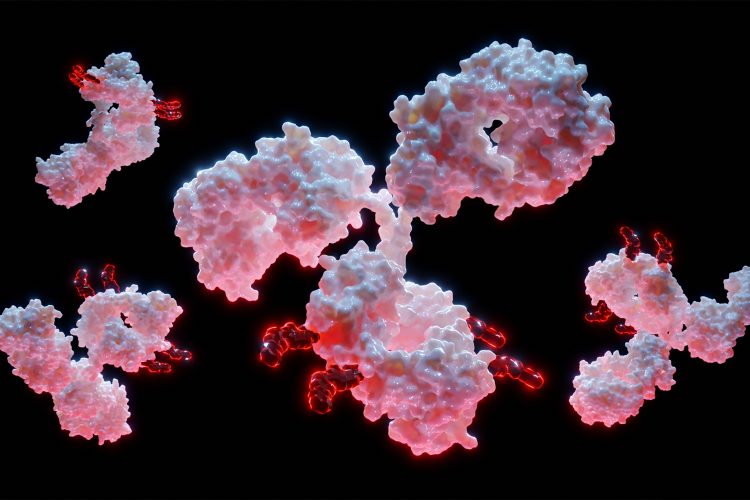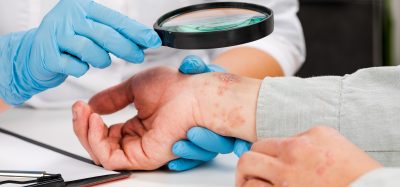Developing the next generation of antibody drug conjugates
Posted: 22 April 2024 | Ellen Capon (Drug Target Review), Léo Marx (Debiopharm) | No comments yet
In this Q&A, Léo Marx, Medicinal Chemistry Project Manager at Debiopharm, details how the therapeutic window of ADCs can be impacted, how we can overcome the challenges associated with achieving site-specific bioconjugation, and other essential considerations for optimising ADC performance.


What are the primary methods used for bioconjugation in antibody drug-conjugate (ADC) development, and how do they influence the stability and efficacy of the resulting ADCs?
Site-specific conjugation methods are primarily utilised for a significant portion of ADCs in clinical developments. Despite excellent pharmacokinetic and stable antibody-linker connections, such ADCs have yet to receive market approval. In contrast, traditional conjugation to disulfide cysteines likely contributes to a similar subset of ADCs in development and accounts for most clinical successes.
However, linker deconjugation remains a concern for cysteine-based ADCs, even among those that have gained approval. Nevertheless, advancements in linker design have enabled the creation of stabilised cysteine attachments. The latest generation of hydrophilic linker facilitates the formation of high drug-to-antibody ratio (DAR) ADCs, with some achieving up to eight drugs per antibody, while maintaining excellent exposure and efficacy.
How do the selection of linkers and conjugation sites impact the pharmacokinetics and therapeutic window of an ADC?
The first generation of ADC linker-payloads displayed high lipophilicity which causes unspecific ADC uptakes and elimination in tissues, potentially leading to off-target toxicity. Instability in circulation is also attributed to early generation linkers, which causes payload detachment and can therefore cause toxicity to non-targeted cells.
A first way to address these two issues is to select a specific conjugation site, capable of accommodating and masking the lipophilic component of the linker-payload and reducing the access of circulating enzymes to increase stability. This approach can be interesting if you want to reuse a clinically validated linker-payload. A second way is to design or select a linker which is hydrophilic and stable in circulation. This approach could be simpler, if you want to develop your ADC with a new generation of linker or payload.
What challenges are associated with achieving site-specific bioconjugation in ADCs, and what strategies are being employed to overcome these challenges?
Site-specific conjugations often necessitate the re-engineering of antibody sequencing to introduce amino acid with a reactive functional group. While methods compatible with the native antibody sequence have been developed, they often require enzymatic processes to carry the conjugation. Such methods may entail additional purification steps and the sourcing of the enzyme in accordance with Good Manufacturing Practices (GMP) to ensure its quality.
Alternatively, some purely chemical methods such as “affinity conjugation” also allow the site-specific modifications of antibodies without the need for enzymes or engineering. This approach offers the advantage of using chemical modification. For example, a technology developed by Debiopharm allows for regiospecific modifications of antibody in a chemical reaction step at DAR 2.
How does the conjugation chemistry affect the drug-to-antibody ratio (DAR) and why is optimising DAR crucial for ADC performance?
To enhance efficacy of an ADC with less potent payload in indications associated with low levels of expression of the receptor, DAR 8 cysteine conjugation can be desirable. At Debiopharm, we commonly employ this method for conjugation of our ADCs.
However, when dealing with highly potent payloads and aiming for a high DAR conjugation, it’s essential to consider potential uses such as very small dosing, which could lead to issues such as non-linear PK or poor tumour penetration. In this case, one should consider restricted DAR 2 or even DAR 1 site specific conjugation, which will allow the dosing of a sufficient amount of ADC to penetrate the tumour.
What are the considerations for selecting the appropriate cytotoxic drug for conjugation in ADCs to ensure both potency against target cells and acceptable safety profiles in patients?
An ADC should expand the therapeutic window of a cytotoxic drug. The payload itself should not be excessively toxic to display a therapeutic window on its own. For example, the use of payloads derived from camptothecin led to the approval of two major ADCs in solid tumours.
The payload should be lipophilic enough to display bystander effects. However, its lipophilicity shouldn’t significantly affect the physchem properties of the ADC to avoid unspecific uptake and clearance.
About the author


Léo Marx, Medicinal Chemistry Project Manager at Debiopharm
Léo is the Medicinal Chemistry Project Manager at Debiopharm, where he spearheads innovative projects aimed at crafting molecules with therapeutic potential. With a passion for organic chemistry, Léo’s expertise lies in the meticulous design and synthesis of compounds crucial to advancing medical science. His proficiency spans various domains, including medicinal chemistry, the synthesis of bioactive natural products, and the intricate realm of Antibody Drug Conjugates (ADCs).
Related topics
Antibodies, Drug Development, Enzymes, Medicinal Chemistry, Pharmacology
Related conditions
Cancer Research
Related organisations
Debiopharm








